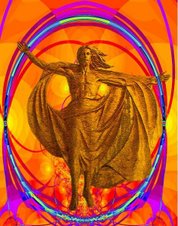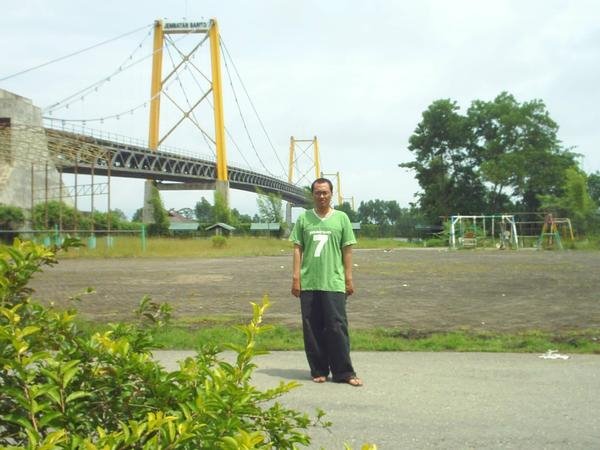Monday, July 2, 2012
LGBT themes in video games
http://en.wikipedia.org/wiki/LGBT_characters_in_video_games
From Wikipedia, the free encyclopedia
(Redirected from LGBT characters in video games)
Jump to: navigation, search
This article may contain original research. Please improve it by verifying the claims made and adding references. Statements consisting only of original research may be removed. (June 2010)
This article may require copy editing for grammar, style, cohesion, tone, or spelling. You can assist by editing it. (May 2012)
Lesbian, gay, bisexual, and transgender (LGBT) characters have been depicted in some video games since the 1980s. In the history of video games, LGBT content has been subject to changing rules and regulations, which are generally examples of heterosexism in that heterosexuality is normalized while homosexuality is subject to additional censorship or ridicule. Sexual orientation and gender identity have served a significant role in some video games, with the trend being toward greater visibility of LGBT identities.
Contents
1 Company policies regarding LGBT content
1.1 Nintendo
1.2 Sega
1.3 Entertainment Software Rating Board (ESRB)
2 Depictions of LGBT characters
2.1 Comical gender confusion
2.2 Transgender characters in video games
2.3 Gay characters in fighting games
2.4 Gay characters in action games
2.5 Gay romance in role-playing games
3 Marketing to LGBT consumers
4 Working inside the industry
5 Asian gaming cultures and depictions of LGBT sexuality
6 See also
7 References
8 External links
8.1 Gender and sexual orientation
8.2 General information on video games
8.3 Nintendo's censorship polices
Company policies regarding LGBT content
Nintendo
In order to legally release a game for a Nintendo system a developer had first to obtain permission from Nintendo. Nintendo reserved the right to preview the games and demand changes before allowing release. They wanted to ensure that no game released for a Nintendo system had objectionable or offensive themes, as well as exercise quality control. This gave rise to a highly developed system of censorship. A game sold on a Nintendo system could not display or make reference to illicit drugs, tobacco and alcohol, violence against women, blood and graphic violence, profanity, nudity, religious symbols, political advocacy, or "sexually suggestive or explicit content."[1]
In 1988, a creature in Nintendo's own Super Mario Bros. 2 the miniboss named Birdo was described in the original instruction manual as thinking he was a girl and wanting to be called "Birdetta". This was later censored by Nintendo of America in future appearances of the character. In 1992, Enix was ordered to remove a gay bar in Dragon Warrior III, among other content changes, before the game could be sold on a Nintendo system.[citation needed] The SNES version of Ultima VII also had to be substantially altered from its original computer edition to remove potentially objectionable content, like ritual murders, or the option to have a male or female "bedmate" if the player paid their fee at the buccaneer-run island.
By 1999, Nintendo had largely given up on its own censorship policies. A year later, Rare released Banjo-Tooie for the Nintendo 64 with a gay frog bartender named "Jolly Roger." The frog wanted Banjo and Kazooie to rescue his co-worker, Merry Maggie, a cross-dressing amphibian who appeared to be Jolly Roger's lover. Jolly Roger would return as a playable character in the Game Boy Advance game Banjo-Pilot (2005). Rare would also release Conker's Bad Fur Day (2001) for the Nintendo 64, featuring an alcoholic squirrel named Conker and his adventures in a world where all of the characters are foul-mouthed creatures who made various dirty jokes in reference to hangovers, homosexuality and oral sex. Enix re-released Dragon Warrior III for the Game Boy Color and was allowed to keep all the original content provided the game was given a Teen rating by the ESRB.
Sega
Like Nintendo, Sega policed the content of games for Sega systems. Unlike Nintendo, Sega's initial system of censorship was more liberal. The Sega content code allowed games to have blood, more graphic violence, female enemies, and more sexually suggestive themes.
Although Sega allowed LGBT themes and characters in games sold for its home console systems, Sega often chose to tone down or erase LGBT characters when porting Asian games to American markets. In Phantasy Star II, a musician's homosexuality was edited so that the only acknowledgment of his sexual orientation was the fact that he charged all male characters less money for his music lessons.[2] In 1992, when Final Fight was released for the Sega CD and Vendetta was released for the Sega Genesis, minor transgender and homosexual enemies were censored.[3] Likewise, Sega's Streets of Rage 3 removed a gay villain wearing Village People attire and transformed a transsexual villain into a man with long hair. It is unclear whether LGBT censorship was part of an overall censorship policy or the voluntary decision of a developer.
In 1993, Sega developed the Videogame Rating Council to give content based ratings to all games sold on a Sega system, thus reducing the need for Sega to maintain a content code for its developers. When Rise of the Dragon was developed for the Sega CD, by Dynamix, a transgender bar patron was retained from the original computer edition as was a gay joke relating to the playable character mistaking his girlfriend for a man with long hair. For this and other reasons the game was given the Council's "MA-17" rating.
Entertainment Software Rating Board (ESRB)
In 1994, several top gaming publishers formed the Entertainment Software Association (ESA) as the trade association of the video game industry. Shortly after its creation, the ESA established the Entertainment Software Rating Board (ESRB) to independently assign individual games content ratings and descriptors according to a variety of factors. In an example of heterosexism, where LGBT identity is not treated neutrally vis-à-vis heterosexuality, gay and transgender characters are currently placed within the content descriptors of mature humor, sexual content, or sexual themes[citation needed], all of which qualify games for the restricted M (Mature) or AO (Adults Only) content ratings.[4]
Following the establishment of the ESRB, console developers relaxed their in-house regulations in favor of ESRB ratings. In 1994, Sega dissolved its Videogame Rating Council after only one year in existence.
Depictions of LGBT characters
See also: List of LGBT characters in video games
A number of recurring tropes, themes and archetypes have developed in the gaming industry with reference to LGBT sexuality. These were often similar to how other forms of popular culture such as Hollywood movie and TV shows dealt with LGBT sexuality.
Comical gender confusion
A common way to deal with LGBT characters is to reveal their sexual orientation through gender inversion. A male character's homosexuality was often indicated by making him a sissy character with effeminate or flamboyant mannerisms, dress, and speech. The underlying assumption is that homosexuals tend also to be transsexual and therefore possess mannerisms stereotypical of the opposite sex. This technique previously had been widely used in Hollywood movies (to circumvent the Production Code's ban on "sexual perversion") and before that in Vaudeville. Although mainly used in video games for its comedic value, gender confusion has also been used as a tool to offer social commentary about sexism or homophobia. The censorship codes of Nintendo and Sega limited the usage of gender inversion to exclusion of cross-dressing until 1994.
Transgender characters in video games
The Super Mario Bros. 2 character Birdo was described as thinking he was a girl and wanting to be called Birdetta in early editions of the instruction manual. The character was changed to simply female until Smash Bros. Brawl reintroduced the concept of Birdo's gender being "indeterminate". Likewise, the Infocom game titled Circuit's Edge features several transsexual characters.
Capcom created Final Fight for the arcade in 1989. The beat 'em up involved the player picking among three fighters on a quest to save the mayor's daughter who was kidnapped by a criminal gang known as Mad Gear. In 1990, Capcom presented Nintendo with a version of the game for the 16-bit Super Nintendo Entertainment System. According to David Sheffs' book Game Over, Nintendo stated that Capcom could not have a female enemy as that violated Nintendo's ban on violence against women. Capcom countered that there were no female enemies in the game, revealing that the female characters Roxy and Poison[5] were also in fact transsexuals. The characters were nevertheless removed from the international versions of the SNES port (the Japanese Super Famicom version retained the characters).[6] However, in 1993, Sega obtained the rights to release the game for their Sega CD. In a sign of Sega's more liberal polices, Poison and Roxy could remain in the international versions, but with less-provocative clothing;[7] also there could be no indication of their supposed transgender status (Sega of America later removed a homosexual boss from the international versions of Streets of Rage 3).
Maniac Mansion: Day of the Tentacle featured a futuristic beauty contest that featured oddly-dressed humans. One person the player can interact with is Harold, who is dressed like a woman and expresses homosexual attraction. The sprite of the character is based on the one of George Washington, who also appears in the game.
Gay characters in fighting games
Many fighting games have characters who are either confirmed or thought to be gay. Having gay male characters in these fighting games can challenge the traditional perception of homosexuals as weak. Nevertheless, hints about a particular character's sexual orientation in a fighting game often take the form of effeminate features, in an otherwise tough and stereotypically masculine character.
In 1994, Sega of America would make various changes to the beat 'em up Streets of Rage 3 from its original Japanese counterpart called Bare Knuckle 3. Among the changes was the removal of the boss named Ash (with a straight character named Shiva replacing him) whose homosexuality was explicitly established by the "Village People" attire that he wore. Ash was taken out of the western edition of the game, but remained a playable character with the aid of the Game Genie. Thus, Sega unintentionally became the first major video game company in the west to give the player the option of choosing a gay character.
The Street Fighter character Zangief has long been thought of as being homosexual,[by whom?] although this was disputed in Capcom Fighting Evolution, where it was stated that he had a girlfriend, although the game is non-canon. The Street Fighter character Eagle, who appears in the original Street Fighter as well as in Capcom vs. SNK 2, has however been confirmed to be gay, as a tribute to Queen singer Freddie Mercury, although several of Eagle's quotes obviously displaying his orientation were censored in the North American version of the game. In the more recent Super Street Fighter IV, the prologue of the fighter Abel hints that his character may be homosexual due to "settling down" with a fellow French mercenary. Also from Super Street Fighter IV, Juri Han is hinted at possibly being a lesbian. It is especially evidenced in Chun-Li and Cammy's rival cutscenes where Juri seems to flirt with them before proceeding to try and kill them. When her official profile was first released, it also mentioned she loves large breasts.
In the Guilty Gear series the character Venom is most clearly in love with his deceased leader, Zato-1, although his feelings do not seem to have been returned.
Being succubi, Lilith Aensland and Morrigan Aensland in Capcom's Darkstalkers series have been long portrayed as being rather openly bisexual, while the same has also been suggested with Q-Bee through her dialogue.
An obscure game known as Groove on Fight is currently the only known fighting game featuring an openly gay couple, the somewhat stereotypical characters Rudolph Gartheimer and Damian Shade.
The character Rasputin in the World Heroes series is implied to be homosexual. One of his win poses has him trying to hold his robes down while wind blows them up, similar to the famous Marilyn Monroe pose. He has a special move in World Heroes Perfect called "The Secret Garden" in which he pulls characters into bushes and presumably has his way with them while hearts float skyward. This move only works on male characters.
Gay characters in action games
In 2001 Metal Gear Solid 2: Sons of Liberty featured a bisexual character, Vamp. The conversation in which this was revealed (by Solid Snake himself) also explains that he was the lover of Scott Dolph, a bisexual Navy commander. The game does not dwell on this point, and accepts it simply as a factor of the character.
The 2004 prequel Metal Gear Solid 3: Snake Eater went further, featuring male bisexuality (Volgin and Major Raikov), and also some other sexual topics rarely touched upon in popular entertainment, such as sexual sadism (Volgin again) and polyamory.
Gay romance in role-playing games
Depictions of gay characters are becoming more common in role-playing games (RPGs). The popular Microsoft owned Fable series has featured the ability to marry and have intercourse with characters of the same sex since its launch in 2004.[8] The 1999 game Persona 2 featured dating elements that included the option to engage in a homosexual relationship.[9] Bioware "has represented queer characters in its games for about as long as it has been making them",[10] including significant gay characters in its RPG franchises Mass Effect and the MMORPG Star Wars: The Old Republic. Other games, such as The Elder Scrolls V: Skyrim also see same-sex marriage as part of giving the players a full-range of character choices.[11]
Marketing to LGBT consumers
See also: Pink money
It has been widely assumed that young, white, heterosexual males are the force driving the industry forward. That belief was strongly challenged by the record-breaking success of The Sims. Maxis had resisted Will Wright's goal of creating the title on the grounds that "girls don't play video games", and the title was seen as being one that did not appeal well to young heterosexual males.[12] In the 1990s the industry began to make some efforts to market games to women by creating software titles with strong and independent female characters as seen in Tomb Raider and Resident Evil. Some video game companies are now moving to further expand their marketing base to include the perceived market of affluent homosexual young men by including LGBT characters and supporting LGBT rights. BioWare has included female same-sex scenes in Mass Effect and allowed sexual interaction between any gender group in Dragon Age: Origins.[13]
Even some games that are considered appealing mainly to the non-traditional demographic continue to censor homosexuality. For instance, despite the tremendous success of The Sims, even the most recent version of the franchise suppresses homosexual identity. Autonomous romantic interactions exist only for heterosexual characters by default.[14] In The Sims 3, players must manually initiate multiple same-sex romantic interactions before a character will be "converted" to homosexuality and begin to engage in such interactions autonomously. The town will be marked gay-friendly, unlocking the autonomy for other characters. If a player does not force at least one character several times to engage in same-sex advances, the player's town will have no visible homosexuality[15].
Critics of the suppression of gay identity often come to the conclusion that, as homosexuality is normalized in broader culture, it will be in video games as well.[16][17]
A 2006 survey exploring gay gamers was the first academic study of any gamer group.[18] With about 10,000 respondents the survey exhibited a reverse bell curve of gamer sexuality, with most people identifying as either completely heterosexual or homosexual.
Working inside the industry
Little is known about what it is like to work within the industry as a gay person. The result is that much of the information that does come out is in dispute. Dani Bunten, a MTF transsexual, designed some of the earliest multiplayer games. In 1996, a Maxis employee named Jacque Servin was fired when he put gay characters into the SimCopter game. Depending on the news source, Servin claims to have done it because he was upset at being grossly overworked at Maxis or as some type of political statement.
Asian gaming cultures and depictions of LGBT sexuality
Most Western games are made for a Western audience. However, Japan, Korea and Taiwan all have large gaming industries which produce for local audiences. Many video games are developed in Japan, and some effort has been made at making what could be called 'gay games.' In Japanese popular culture, LGBT men were often considered bishonen, which translates as "beautiful boys." This was also tied to the success in Japan of comic books and animation with open and subtle LGBT characters. A select genre of adult pornographic Japanese games exist called H-games. This genre includes gay male and gay female subgenres. This material generally does not make it over to the west in English, and western reviews of the gay male video games tend to see the homosexuality as a gimmick in an otherwise mediocre game. However, homosexuality, while relatively innocuous among celebrities in Japan, can still be considered an oddity due to Japan's regimented and conservative social structure. Despite a lack of strong social stigma, homosexuality in men is commonly misconstrued with transgenderism and transvestism in Japan and open homosexuality is rare, due to conformity.[19]
Subscribe to:
Post Comments (Atom)







No comments:
Post a Comment